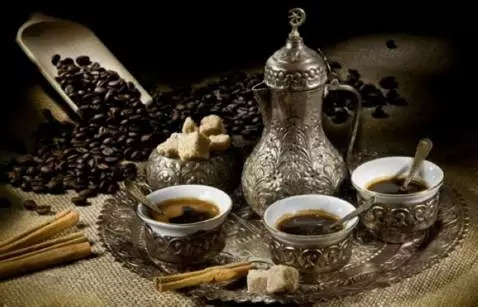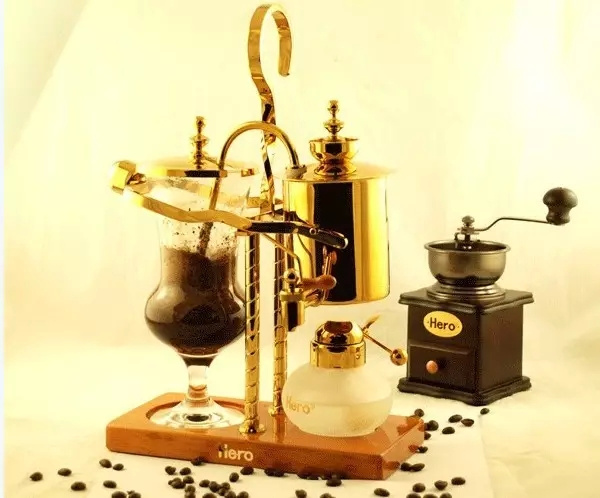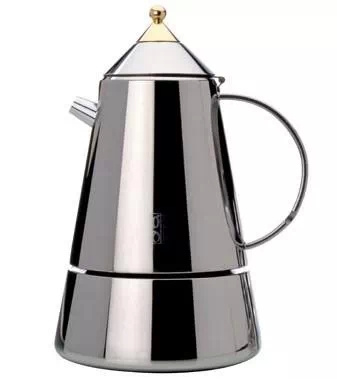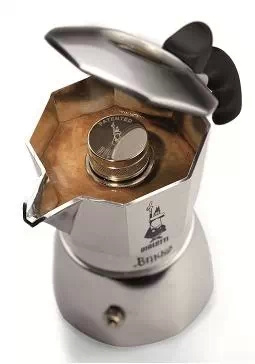What are the types of coffee pots and their instructions

Coffee beans have spread from the Arab region to all parts of the world, but the method of making Arabian coffee has not spread. The most basic difference between Arabian coffee making and other methods is that according to tradition, Arabs boil coffee three times. Repeatedly brewed coffee will lose some very delicate taste, but as a result, it will win a rare espresso.
Arabica coffee is made in an Arabian coffee pot. It is a small copper pot with a long handle. First, heat two tablespoons of fine coffee powder, one spoonful of sugar and a cup of water in the pot. When the water boils, the coffee pot will absorb the heat. Usually after the water is boiled three times, the coffee can be poured out and drunk. According to your personal preference, you can also add a nutmeg to your coffee.
Siphon coffee maker

Rob Naiphir, a British marine engineer, invented the prototype of the siphon coffee maker as early as 1840, but it was not until the early 20th century that it developed into its present form. Siphon coffee pots are usually made up of two transparent glass hemispheres, coupled with the use of alcohol lamps, they look like chemical experimental instruments.
Add hot water to the lower hemisphere, coffee powder to the upper hemisphere, and light the lowest alcohol lamp. After the water is boiled, the water in the lower hemisphere rises to the upper hemisphere and stirs gently with a stick to fully mix the water with the coffee powder. After heating for a while, turn off the heat, the coffee liquid in the upper hemisphere is filtered and dripped into the lower hemisphere, and the coffee is ready. As the brewing process is full of performance fun, but also can enjoy the coffee quenching process, so it can add to the atmosphere of drinking coffee.
Before heating the siphon coffee pot, the water droplets on the outside of the pot must be wiped clean to prevent the kettle from breaking due to uneven heating after heating. The coffee pot must be washed with clean water immediately after use to prevent the residual coffee oil from sticking to the pot wall and affecting the quality of the next coffee brewing.
In addition, the filter cloth is also washed with clean water after use, then placed in clean water and stored in the refrigerator. Fiddling with the glassware of siphon coffee pots and gazing at the coffee falling into the lower hemisphere after filtering requires patience and meticulous care, a bit like oriental tea art; some siphon coffee pots are ingenious in shape and exquisite in workmanship. Siphon is the most popular method of brewing coffee in Japan and Taiwan, and it is also popular in many places in the Chinese mainland region.
Piston coffee maker

The piston pot method is called the pressurization method in France, the American-European force method (Meloir) in the United States, and the coffee pot method (Cafetiere) in Europe, which is a quite good method of coffee blending. Many people like to make coffee in this way, because it preserves all the flavor of ground coffee beans, while other methods are difficult to do this, and even make the coffee taste like filter paper.
The piston pot is said to have been invented in 1993 by an Italian named Caliman who sold his designs and patents to Switzerland in order to escape Italy during the war. The method of using a piston kettle is very simple, first use a hot water kettle and put in an appropriate amount of moderately ground coffee powder. The ratio of coffee powder to water is at least 4 teaspoons of coffee powder to about half a liter of water. When entering the freshly boiled water, stir well with a wooden spoon and wrap the coffee pot with a heat jacket to keep warm. Let the coffee soak for three or five minutes, slowly precipitate, and then press the piston with a filter to the bottom of the pot to separate the coffee powder from the brewed coffee. If you like strong coffee, you can use more than four teaspoons of coffee powder. The piston coffee maker is very convenient, second only to the drip filter, and is one of the two most popular ways to make fresh coffee.
Cheaper coffee pots use nylon instead of stainless steel as a filter. You will find that the piston pot method can easily dispose of the coffee residue, so that you can fully enjoy the 100% flavor of the coffee. Another advantage is that there are a lot of choices, so when you make breakfast coffee, you don't have to use an eight-cup pot. Its only disadvantage is that it can't keep warm.
Mocha coffee maker

Every Italian family has several mocha pots of different sizes. Whether you like the coffee or not, the mocha pot looks really beautiful and adorable. The perfect design of the double lid of the mocha pot allows its top to be used for heating.
As a result, the mocha pot has the characteristics of both an Italian coffee maker and a coffee filtration pot. After the cold water is heated in a mocha pot, it goes up through a pipe in the pot, and then down through the fine coffee powder. In this way, an espresso coffee can be made in one minute, which can fully meet the needs of coffee lovers.
The zero temperature of ice drop coffee seals the original aroma of coffee, and the full rate of 60 drops per minute ensures that every drop contains the essence of coffee, which brings a new challenge to your taste.
Important Notice :
前街咖啡 FrontStreet Coffee has moved to new addredd:
FrontStreet Coffee Address: 315,Donghua East Road,GuangZhou
Tel:020 38364473
- Prev

How many cups of coffee a day is best for you? How many cups of coffee is best for you every day?
Coffee is one of the three major drinks in the world. With the development of the times, it is no longer a drink in western countries. Many people in our country also like to drink coffee. However, it is well known that the harm of coffee exists, and you should not drink too much coffee every day. How many cups of coffee is best for you every day? How many cups of coffee a day is best for 1 cup of coffee: Greek researchers
- Next

Master the skills of distinguishing different coffee flavors
When drinking coffee with friends, you are often asked if your coffee is sour. Or I don't like sour coffee, etc. At first I thought it was strange, but later I gradually understood that the so-called acid is not that acid. The word Acidity, which is often used in our coffee tasting terms, is translated into acidity in Chinese and is often misunderstood as acidity in the value of acidity or lemon or...
Related
- Detailed explanation of Jadeite planting Land in Panamanian Jadeite Manor introduction to the grading system of Jadeite competitive bidding, Red bid, Green bid and Rose Summer
- Story of Coffee planting in Brenka region of Costa Rica Stonehenge Manor anaerobic heavy honey treatment of flavor mouth
- What's on the barrel of Blue Mountain Coffee beans?
- Can American coffee also pull flowers? How to use hot American style to pull out a good-looking pattern?
- Can you make a cold extract with coffee beans? What is the right proportion for cold-extracted coffee formula?
- Indonesian PWN Gold Mandrine Coffee Origin Features Flavor How to Chong? Mandolin coffee is American.
- A brief introduction to the flavor characteristics of Brazilian yellow bourbon coffee beans
- What is the effect of different water quality on the flavor of cold-extracted coffee? What kind of water is best for brewing coffee?
- Why do you think of Rose Summer whenever you mention Panamanian coffee?
- Introduction to the characteristics of authentic blue mountain coffee bean producing areas? What is the CIB Coffee Authority in Jamaica?

